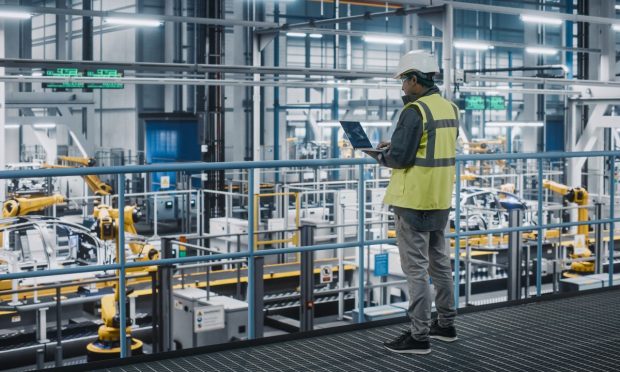Platforms and Digital Payments Help Modernize ‘Smokestack’ Economy

The industrial economy has long been in need of a digital makeover.
The mainstays of industry — where things are made, the tangible goods from semiconductor chips to cars to industrial agriculture (fertilizers, etc.) to … well you name it — have yet to fully catch up to some of the innovations seen in other sectors. These are the “smokestack” links in supply chains that pass raw materials down the line that, eventually, are transformed into the finished items that help us live everyday life.
The Federal Reserve said earlier this month that three years after the pandemic first rocked the world, supply chains are back to normal.
But the pandemic, of course, spotlighted inefficiencies inherent across a range of sectors, as buyers and suppliers pivoted to work-from-home environments. And suddenly, the faxes, the paper checks, the paper contracts and the phone calls were no longer tenable.
Though, per the Fed findings, things have returned to some semblance of normalcy, forward-looking firms have found the willpower to more fully modernize their processes so they’re prepared for the seismic shocks that might come next. Inflation, of course, remains a prime mover in helping spur companies to re-consider how they come to market, how they find suppliers, and of course how everyone gets paid.
In this, the first of a series, we look at the emergence of platforms and some of what might be called the “consumerization” of B2B interactions for industries that have been around for hundreds of years.
And against that backdrop, we are seeing the blurring of the digital and the very pinnacle of physical realms. As PYMNTS’ Karen Webster noted in a column on Monday (March 27) “the app economy that emerged over the decade of the 2010s inspired innovators to create the infrastructure and the apps for the consumer-driven version of the convergence of the digital and physical worlds. Innovators weren’t inspired to create apps that asked users to abandon the physical world, but instead to use technology to create more convenient ways to live in it.”
Both Sides Now
The most immediate digital innovations shifting the way things have been done in the “smokestack” economy have, we note, tied to bringing the various sides of a transaction together. The more readily buyers and suppliers can come together — along with simultaneous price discovery — the more tightly wound supply chains can become.
The steel industry may be among the most visible examples here. As PYMNTS wrote last year, Shep Hickey, CEO of online platform Bryzos, told Karen Webster, “There are certain sectors that have a decent amount of stock available and the pricing may not be all that volatile. Then there are other sectors that are in the midst of a supply shock, and it’s hard to find what you need.” The Bryzos platform, he noted, links buyers and sellers through anonymous transactions to both parties until the deals are done and closed (through Bryzos’ checkout and documentation processes). There’s also a buy now, pay later (BNPL) component. Paying over time in visible installments is also proving a lure for other marketplaces. Within construction, DOZR, which late last year said it was bringing in new BNPL capabilities, has embedded that functionality in its checkout process.
In another example, ChemDirect has cemented its place as an online marketplace for specialty chemicals, and as a central hub to bring buyers and suppliers together. As is the case with most online platforms, the offerings are extensible, where integrated logistics planning, credit terms and real-time inventory is shipped directly from vetted suppliers. “We’ve designed logistics into our platform,” ChemDirect President David Haase told PYMNTS. “So when you’re shopping for a chemical, we are considering the entire landed cost and the planning of the logistics portion of the procurement as you shop.”
